As the nation’s third-largest state, California is filled with natural wonders. Some — like Yosemite National Park or Big Sur — are world-famous, while others remain relatively hidden gems… for now. If you’re looking to get off the beaten track on your next California getaway, discover nine lesser-known natural wonders to visit in the Golden State.
Glass Beach – Fort Bragg
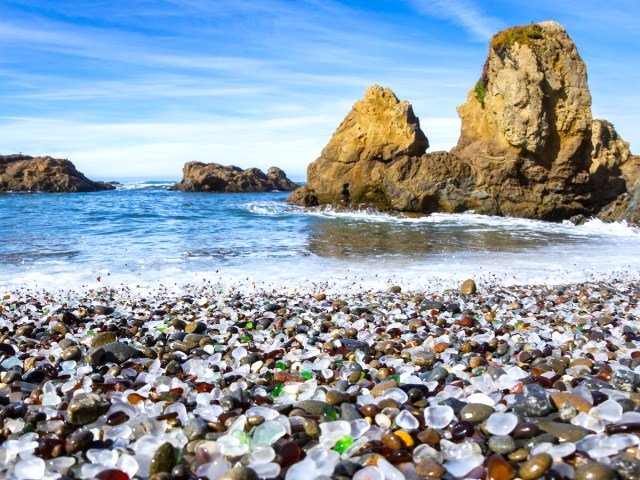
Glass Beach takes the phrase “one person’s trash is another person’s treasure” to heart. Located along the Mendocino Coast in Fort Bragg, this former city dump has been transformed into an oceanside destination bespeckled with gemstone-like sea glass. Between 1906 and 1967, the beach was a disposal site for everything from old cars to empty bottles, but in the decades since, it has become coated with a layer of tiny smooth glass treasures — formed from the powerful ocean waves colliding with the discarded refuse.
The crystalline pebbles that adorn Glass Beach come in a kaleidoscope of colors, which largely correspond to the type of trash they originated from. Blue typically correlates to old seltzer or apothecary bottles, pink and green ones might have formed from perfume containers that have since oxidized, and the rarer ruby red gems are believed to have been automobile tail lights. While removal of any glass is prohibited, visitors are encouraged to explore any of the beach’s three sections in search of the most vibrant and photogenic bits of glass.
Devil’s Golf Course – Death Valley
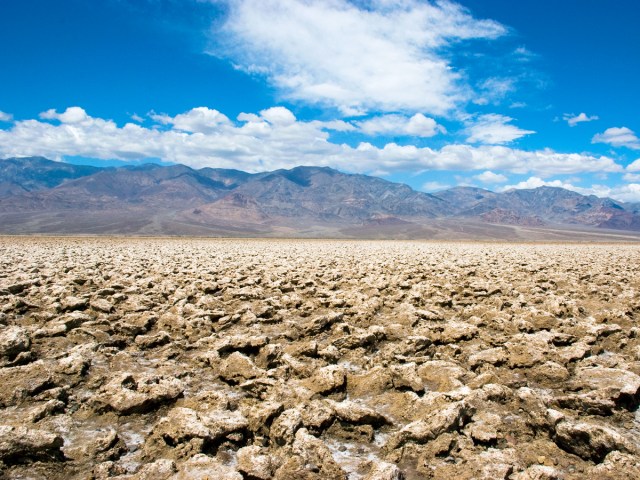
A 1934 guidebook from the National Park Service reads, “Only the devil could play golf in this Death Valley landscape.” California’s Devil’s Golf Course in Death Valley National Park isn’t exactly fit to host a tournament. The apocalyptic landscape consists of a former lakebed from a lake that evaporated thousands of years ago. The “golf course” refers to the salt and mineral pan punctured by deep divots, which are sometimes reshaped by rainfall. Since the beating desert sun regularly evaporates the water, thorny formations as high as two feet tall remain.
Alamere Falls – Point Reyes National Seashore
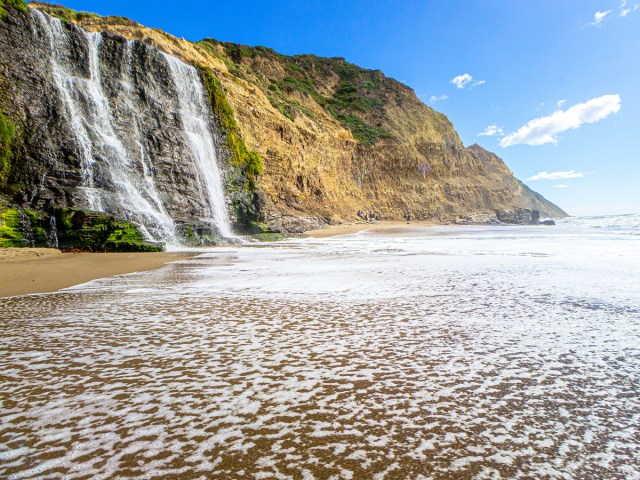
Tidefalls are waterfalls that lead directly into the ocean. The rarity of this occurrence makes Alamere Falls in Point Reyes National Seashore, California all the more special. As one of only two tidefalls in the state (the second is McWay Falls near Big Sur), the 30-foot cascade drops from the cliff onto Wildcat Beach — one of America’s coolest secret beaches. To see the unique falls, you’ll have to put in considerable legwork. Reaching Alamere Falls requires a 13-mile, round-trip trek along the Coast Trail, but the hike is worth the effort. Not only will you be rewarded with views of the cascade, but you’ll also pass two beautiful lakes along the way — Pelican and Bass Lake — which are popular spots for swimming.
Pfeiffer Beach – Big Sur
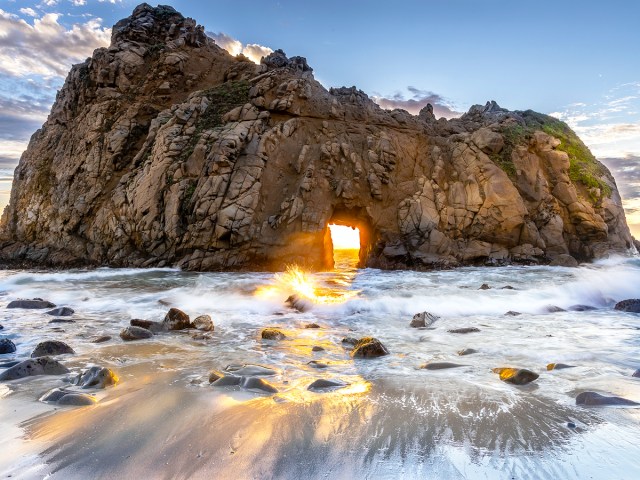
Big Sur offers many spectacular panoramas, but Pfeiffer Beach is perhaps the most stunning view on the California coast. This unique purple-sand beach is one of Big Sur’s most photographed landscapes, in part due to the Keyhole Arch that lies just beyond. But it’s located just enough off the beaten tourist path to have fewer crowds than the rest of this stunning coastline. Surrounded by other tall sea stacks, the keyhole truly is something special, particularly when the sun is shining through it. As for the magical purple sand, the shade is caused by deposits of manganese garnet that wash up on the beach from the surrounding hills. Pro tip: Visit after a winter storm to see the most effervescent shade of violet.
Chandelier Drive-Thru Tree – Leggett
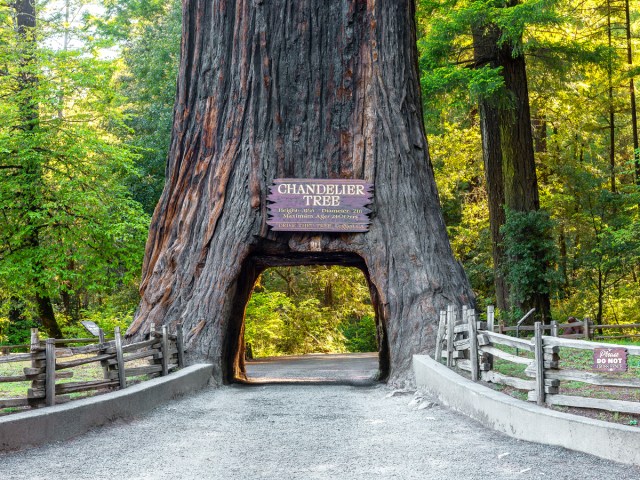
The Chandelier Drive-Thru Tree in Leggett, three hours north of San Francisco, is one of just a handful of redwood trees that visitors can drive through. Located in Underwood Park, the 2,400-year-old giant is 315 feet tall and 21 feet in diameter, allowing it to stand while the middle of its trunk is missing. In the past 50 years or so, some of the world’s most famous drive-thru trees have fallen down, including Yosemite’s Wawona Tree and Calaveras Big Trees State Park’s Pioneer Cabin Tree. Redwood and giant sequoia trees are some of the biggest species in the world. They are found almost entirely in the Pacific Northwest and Northern California, the latter of which is home to Redwood National and State Parks.
Morro Rock – Morro Bay
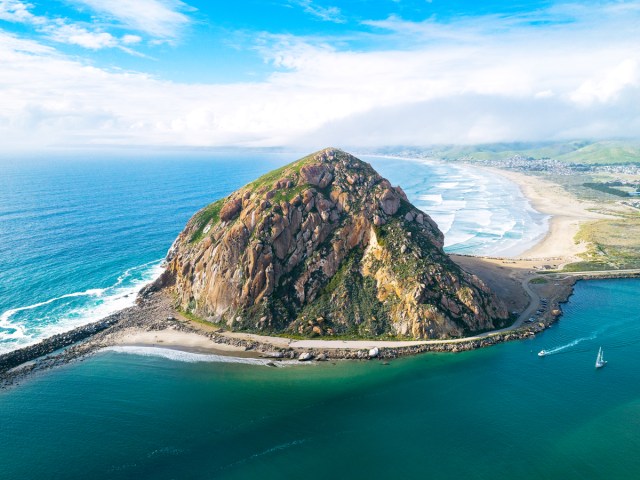
Morro Bay is one of the most charming towns on California’s lesser-trafficked Central Coast, and Morro Rock is its most distinguishable landmark — for good reason. This massive rock — an ideal pit-stop on a road trip through the Golden State — stands 576 feet tall and is located at the mouth of the harbor on the edge of the Pacific. Nesting peregrine falcons reside on Morro Rock, which is part of a chain of nine ancient volcanic peaks stretching from San Luis Obispo to Morro Bay called the “Nine Sisters.” Morro Rock is an official California Historical Landmark and was formed about 23 million years ago from the plug of an extinct volcano. While it’s beautiful to admire from afar, climbing the rock is strictly prohibited.
Ancient Bristlecone Pine Forest – Inyo National Forest

The twisted trees of the Ancient Bristlecone Pine Forest are the oldest trees in the world — remarkably, some of these Great Basin bristlecone pine trees have stood for more than 4,000 years. They are also one of the few plants that grow in the White Mountains of eastern California, due to the alkaline limestone content of the soil. Some bristlecone pines also grow in mountainous parts of Nevada and Utah, and they seem to prefer soil that is inhospitable to most plants. The Ancient Bristlecone Pine Forest is part of Inyo National Forest, located between Yosemite and Death Valley on the eastern edge of the state. Visitors can learn more about the fascinating trees at the visitor’s center and embark on one of several self-guided trails through the forest.
Eureka Dunes – Death Valley National Park
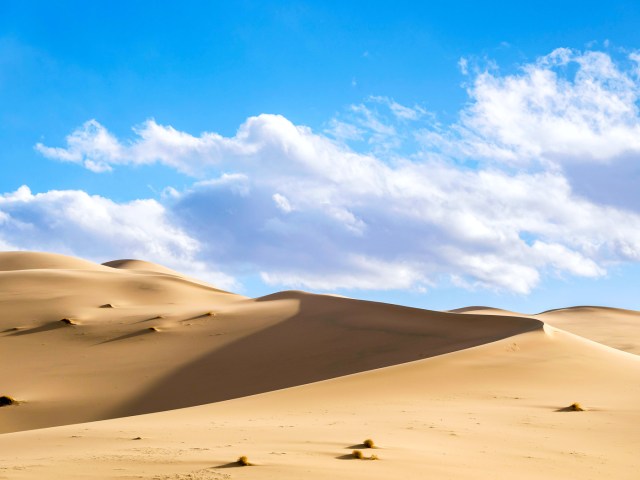
Part of Death Valley National Park, Eureka Valley is located northwest of Death Valley itself at 3,000 feet in elevation. Most notably, the valley is home to the Eureka Dunes, the tallest sand dunes in California. They cover an area that is three miles long and a mile wide, with the dunes rising over 680 feet above the desert floor. Visitors can climb to the top of the sinking sand and listen carefully for a low bass note; unless it’s damp, you might be fortunate enough to hear the sand singing as it drifts down the steep dune face. The dunes are only one part of this valley’s majestic landscape — the 8,600-foot-tall Last Chance Mountains tower alongside them.
Farallon Islands – San Francisco
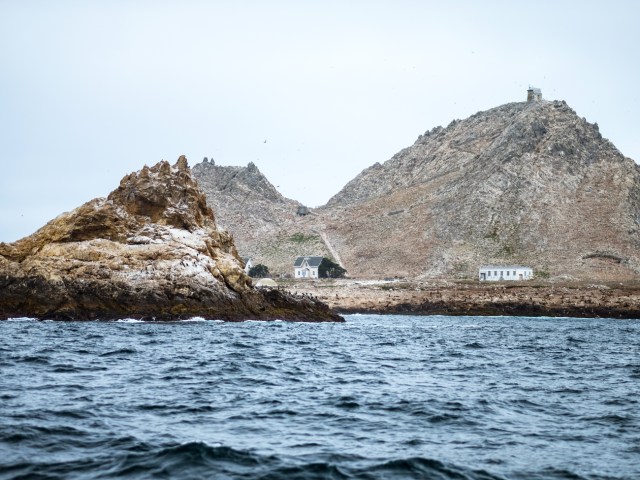
The Farallon Islands certainly look remote and rugged, but the archipelago is just 30 miles west of the Golden Gate Bridge in San Francisco. While the islands are close to the city, they haven’t been inhabited since the 1960s. Fur traders used to kill wildlife for pelts, blubber, and eggs as early as the 1800s, but the U.S. Fish and Wildlife Service has managed the islands since 1969, attempting to return the area to its natural state. Today, the Farallons are part of the San Francisco Bay National Wildlife Refuge Complex, which is home to the largest seabird nesting colony south of Alaska.
More from our network
Daily Passport is part of Inbox Studio, which publishes content that uplifts, informs, and inspires.
















